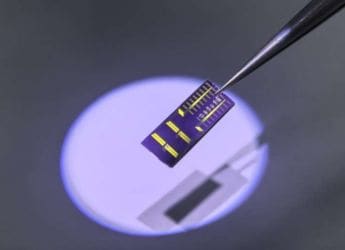- Home
- Mobiles
- Mobiles News
- Music, lighting can be used to trigger mobile malware
Music, lighting can be used to trigger mobile malware

Researchers at the University of Alabama at Birmingham (UAB) presented the research at the 8th Association for Computing Machinery (ACM) Symposium on Information, Computer and Communications Security (ASIACCS) in Hangzhou, China.
"When you go to an arena or Starbucks, you don't expect the music to have a hidden message, so this is a big paradigm shift because the public sees only emails and the Internet as vulnerable to malware attacks," said Ragib Hasan, assistant professor of computer and information sciences and director of the UAB SECuRE and Trustworthy (SECRET) computing lab.
"We devote a lot of our efforts towards securing traditional communication channels. But when bad guys use such hidden and unexpected methods to communicate, it is difficult if not impossible to detect that," Hasan said.
A team of UAB researchers was able to trigger malware hidden in mobile devices from 55 feet away in a crowded hallway using music.
They were also successful, at various distances, using music videos; lighting from a television, computer monitor and overhead bulbs; vibrations from a subwoofer; and magnetic fields.
"We showed that these sensory channels can be used to send short messages that may eventually be used to trigger a mass-signal attack," said Nitesh Saxena, director of the UAB Security and Privacy in Emerging computing and networking Systems (SPIES) research group and assistant professor in the Center for Information Assurance and Joint Forensics Research (CIA-JFR).
"While traditional networking communication used to send such triggers can be detected relatively easily, there does not seem to be a good way to detect such covert channels currently," Saxena said.
Researchers were able to trigger malware with a bandwidth of only five bits per second - a fraction of the bandwidth used by laptops or home computers.
"This kind of attack is sophisticated and difficult to build, but it will become increasingly easier to accomplish in the future as technology improves," said Shams Zawoad, a doctoral student and graduate assistant in the SECRET computing lab.
"We need to create defenses before these attacks become widespread, so it is better that we find out these techniques first and stay one step ahead," Zawoad said.
Get your daily dose of tech news, reviews, and insights, in under 80 characters on Gadgets 360 Turbo. Connect with fellow tech lovers on our Forum. Follow us on X, Facebook, WhatsApp, Threads and Google News for instant updates. Catch all the action on our YouTube channel.
Related Stories
- Samsung Galaxy Unpacked 2025
- ChatGPT
- Redmi Note 14 Pro+
- iPhone 16
- Apple Vision Pro
- Oneplus 12
- OnePlus Nord CE 3 Lite 5G
- iPhone 13
- Xiaomi 14 Pro
- Oppo Find N3
- Tecno Spark Go (2023)
- Realme V30
- Best Phones Under 25000
- Samsung Galaxy S24 Series
- Cryptocurrency
- iQoo 12
- Samsung Galaxy S24 Ultra
- Giottus
- Samsung Galaxy Z Flip 5
- Apple 'Scary Fast'
- Housefull 5
- GoPro Hero 12 Black Review
- Invincible Season 2
- JioGlass
- HD Ready TV
- Laptop Under 50000
- Smartwatch Under 10000
- Latest Mobile Phones
- Compare Phones
- OnePlus 15R
- Realme Narzo 90x 5G
- Realme Narzo 90 5G
- Vivo S50 Pro Mini
- Vivo S50
- OPPO Reno 15c
- Redmi Note 15 5G
- Redmi Note 15 Pro 5G
- Asus ProArt P16
- MacBook Pro 14-inch (M5, 2025)
- Infinix Xpad Edge
- OnePlus Pad Go 2
- OnePlus Watch Lite
- Just Corseca Skywatch Pro
- Acerpure Nitro Z Series 100-inch QLED TV
- Samsung 43 Inch LED Ultra HD (4K) Smart TV (UA43UE81AFULXL)
- Asus ROG Ally
- Nintendo Switch Lite
- Haier 1.6 Ton 5 Star Inverter Split AC (HSU19G-MZAID5BN-INV)
- Haier 1.6 Ton 5 Star Inverter Split AC (HSU19G-MZAIM5BN-INV)

















